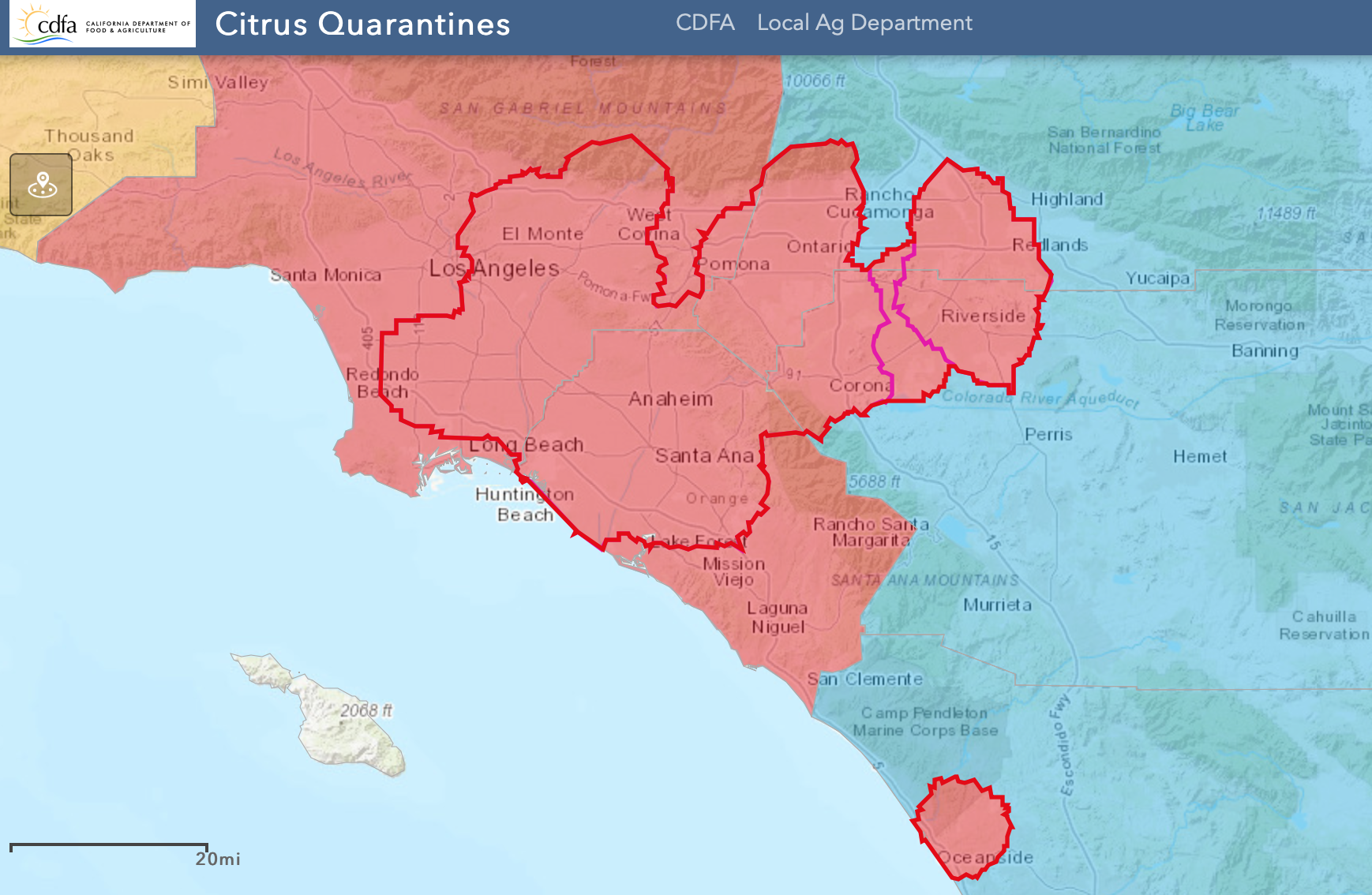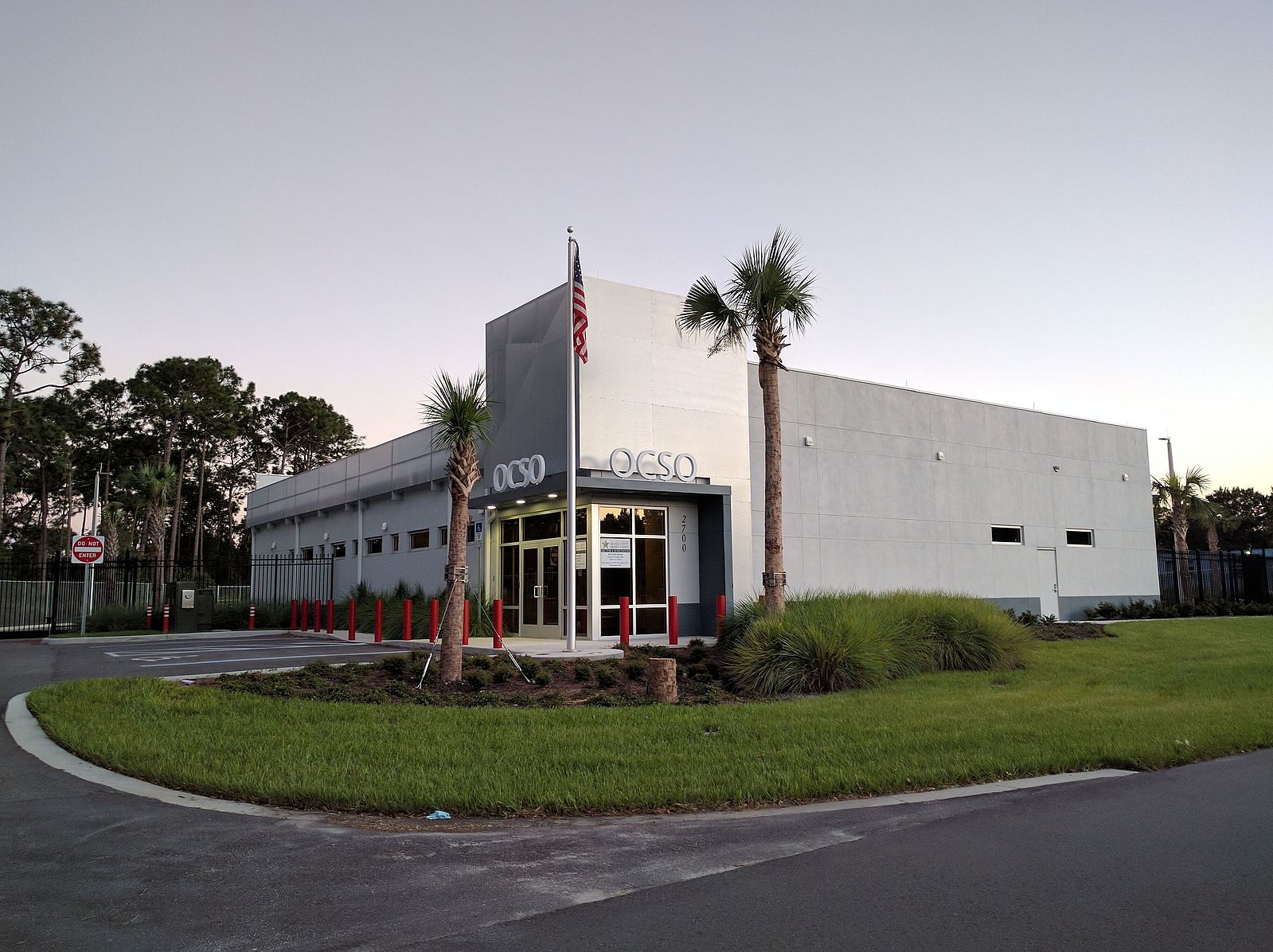The Board of Supervisors on Tuesday approved the Riverside County Office of Agriculture’s request for a renewal of a local emergency stemming from citrus greening disease.
In a 5-0 vote without comment, the board signed off on Agricultural Commissioner Ruben Arroyo’s emergency declaration, which has been submitted on an ongoing basis for almost five years, connected to the threat to the county’s citrus crops, valued at $187 million.
The Office of Agriculture is under contract with the California Department of Food & Agriculture to act as the enforcement agent to ensure measures are maintained to contain or eliminate greening disease, also known as Huanglonbing, which is spread by the Asian citrus psyllid.
According to the U.S. Department of Agriculture, psyllid infestations have been uncovered in numerous locations in northwest and southwest Riverside County.
In July 2017, a grapefruit tree and two other trees in the area of Chicago and Marlborough avenues in east Riverside became infested with the pests, prompting the state to place a quarantine over a 94-square-mile area encompassing both Riverside and San Bernardino counties.
Under the still-active state order, only citrus products that are “commercially cleaned and packed” are permitted to be shipped out of the quarantine zone.
No citrus nursery stock can be moved outside the area under quarantine, and no residentially grown citrus fruit can be moved. However, growers are permitted to consume and share with people within the quarantined locations.
A map of the impacted area, along with the boundaries of similar quarantines in Los Angeles and Orange counties, can be found at https://www.cdfa.ca.gov/citrus/pests_diseases/hlb/regulation.html.
The board first declared a local state of emergency in August 2017 because of the potential spread of greening disease.
The county has roughly 20,000 acres of commercial citrus crops.
The city of Riverside’s foundational citrus-bearing tree, known as the “parent navel orange tree,” located at the intersection of Arlington and Magnolia avenues, received protective netting and treatment in April 2019 to prevent an Asian citrus psyllid infestation. The tree is listed as a California Historic Landmark and has been preserved since 1873.
Psyllids host virulent bacteria that cause greening disease, which destroys plants’ vascular systems, rendering fruits misshapen and unsellable. The disease typically kills infected trees within a few years.
The fingertip-size, moth-like insects arrived in the United States in the 1990s. The disease rampaged throughout Florida in 2005 and has since inflicted over $3 billion in damage to crops in the Sunshine State, according to a study published by the University of Florida.
Psyllids originate in tropical and subtropical regions. They first appeared in California in 2008 and have been trapped in citrus-growing areas throughout the Inland Empire.







